Additional notes (click to expand)
Commemorative
Helenium - possibly derived from the legend that Helen of Troy carried a bunch of their flowers when she left her husband and went off with Paris.
Medicinal
Prescription only medicine: Inulin
The 17th C herbalist Nicholas Culpeper wrote of it, ‘one of the most beneficial roots nature affords for the help of the consumptive.’
Culpeper, Nicholas. (1983). Culpeper's Colour Herbal, W. Foulsham & Co. Ltd.. Potterton, David
Gerard, 16th C herbalist, tells us: 'It is good for shortnesse of breathe and an old cough, and for such as cannot breathe unless they hold their neckes upright.'
'Mrs Grieves (1931) A Modern Herbal' at www.botanical.com
Pliny advised, 'let no day pass without eating some of the roots of Enula, considered to help digestion and cause mirth.'
Roots, flower and oil are still used by modern herbalists internally for bronchitis, hay fever, coughs, asthma, tuberculosis, pleurisy, catarrh and weak digestion associated with mucus formation. Contains inulin, sometimes used by diabetics as a sweetener.
Since Roman times it has been thought to have a soothing effect on the intestinal tract, when it was taken for indigestion.
Smith M., Bates D., Herbs The Essential 21st Century Guide Rodale Books International
Culpeper: ‘Elecampane, is ... wholesome for the stomach, resists poison, helps old coughs and shortness of breath, helps ruptures and provokes lust; in ointments it is good against scabs and itch.’
Culpeper, Nicholas. (1650). A Physical Directory . London, Peter Cole.
Nomenclature
First described.
Linnaeus, Carl.(1753). Species Plantarum 2: 881.
The botanical name said to refer to its association with Helen of Troy, the plant either sprang from her tears or she was holding a branch of it when Paris made off with her.
Smith M., Bates D., Herbs The Essential 21st Century Guide Rodale Books International
Other use
Once a popular flavouring for deserts and fish sauces. Root may be candied or made into a cordial. An ingredient of vermouth or absinthe.
Inula helenium L. Asteraceae. Elecampine, Elecampane, Enulae campinae Distribution: Britain, S. Europe to the Himalayas. Used medicinally for 2,000 years. Culpeper (1650) writes ‘Elecampane, is ... wholesome for the stomach, resists poison, helps old coughs and shortness of breath, helps ruptures and provokes lust; in ointments it is good against scabs and itch.’ Coles (1657) writes '... some think it took the name from the tears of Helen [of Troy] from whence it sprung, which is a Fable.; others say it was so called, because Helen first found it available against the biting and stingings of venomous Beasts, and others think it took its name from the Island Helena where the best was found to grow. We in English call it Elecampane generally, yet in some countries of the Land, it is called Sabwort and Horse-heal.' He recommends it for almost every condition - phlegm, breathlessness, cough, stomach upsets, gout, rheumatism, epilepsy, plague, fevers, scabs, itch, sores, bad teeth, freckles, melancholy, purgation, wind, inducing diuresis and menstruation. Coles is quoting Dioscorides' Materia Medica of c. 70AD (Gunther, 1959). Bentley (1861) used it for chronic catarrh and dyspepsia. It contains sesquiterpene lactones which can cause allergies and irritation (Medicines Control Agency report, 2002).It is the source of Inulin, stored as an energy source for the plant instead of starch, a polysaccharide with use as a sugar substitute for diabetics, but for those with fructose malabsorption it causes flatulence and indigestion. It is licensed for use in Traditional Herbal Medicines in the UK (UK Medicines and Healthcare Products Regulatory Agency (MHRA)).
Oakeley, Dr. Henry F. (2013). Wellcome Library notes.
link
Toxicity
It contains sesquiterpene lactones which can cause allergies and irritation (MCA, 2002).
Medicines and Health Care Regulatory Agency , MCA. (2002). Medicines and Health Care Regulatory Agency (MHRA) for restricted or prohibited herbal medicines. Medicines and Health Care Regulatory Agency .
link
Podcast
Inula helenium L.
Family: ASTERACEAEGenus: Inula
Species: helenium L.
Common names: Elecampane; Scabwort
Pharmacopoeia Londinensis name: Enula campana
Distribution summary: Eurasia
Habit: Perennial
Hardiness: H5 - Hardy; cold winter
Habitat: Wasteland and roadsides
Garden status: Currently grown
Garden location: Pharmacopoeia Londinensis 1618 'Barks,Woods,Chips' (HSE 7B), Pharmacopoeia Londinensis 1618 'Roots' (HSE 3)
Flowering months: June, July
Reason for growing: Medicinal, other use, prescription only medicine, traditional herbal registration


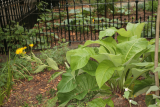
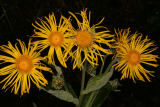
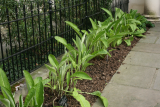
.JPG)
.JPG)
.JPG)
.JPG)
.JPG)
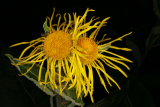


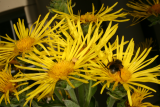




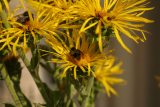
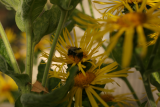
.JPG)
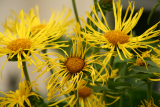
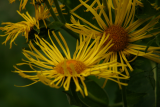
.JPG)
.JPG)
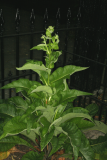
.JPG)
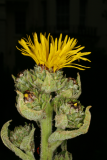
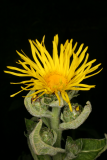
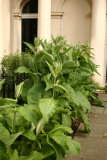
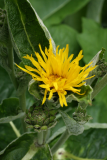
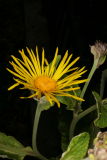
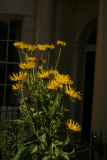

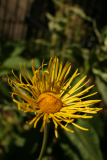
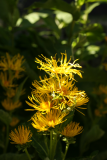

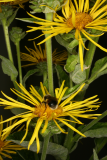
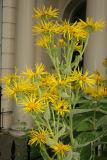
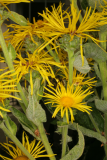
.JPG)
.JPG)
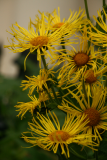

.JPG)
.JPG)
.JPG)
.JPG)
.JPG)